Media Journal: Best of January 2021
What a month it's been. As a celebration for the end of January, I thought I'd start a new series on Project-Topia: a selection of my favorite media from this month. This does not include anything that I'm watching, playing, etc. for other projects on this blog. So, no Marvel Comics, manga, retro games, or media from the unnamed project launching (hopefully) later this week will be included in this list.
But even besides those, I found a lot of media this month worth talking about, so let's dig in.
BOOKS
The Lightning Thief
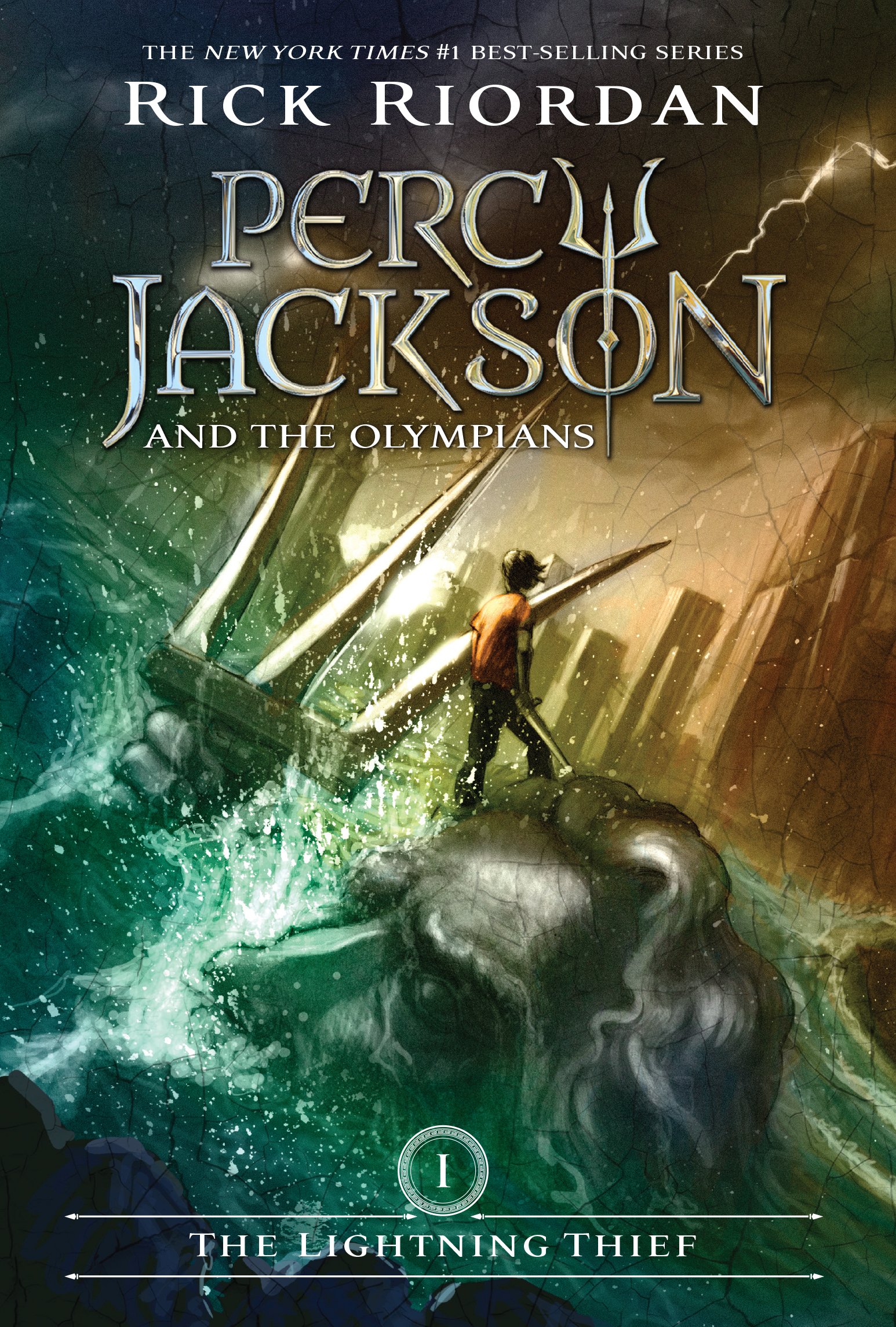
As part of my plans for 2021, I thought it was time I got started on reading again, starting my own personal book-of-the-month club. Reading books is usually pretty hard for me, but one book a month? That I can do, especially when the list of books I've been wanting to read has grown so much over the last year or so.
I'm starting with The Lightning Thief, the first in Rick Riordan's multi-series franchise, published in 2005. Now, I have read this book before, when my sister had the original hardcover printing on her shelf. But at the time, I wasn't intending to read further. This time, I'm interested in the full series.
The Lightning Thief kicks off a five-book series called Percy Jackson & the Olympians, a modern YA take on Greek mythology. It's followed by two sequel series, and Rick Riordan has since branched out into writing trilogies about Egyptian and Norse mythology. He's also brought other writers in to write books inspired by mythology from at least a dozen other sources, from Aztec to Santeria. It's a fascinating spread that I'm eager to dig into.
The original book doesn't yet betray these ambitions. The Lightning Thief came right in the middle of what I remember as a scramble to find the next Harry Potter series. Alongside The Lightning Thief came the Charlie Bone books (2002), the Artemis Fowl series (2001), Eragon (2002), the Bartimaeus trilogy (2003), and for adults, Jonathan Strange & Mr. Norrell (2004) and Lev Grossman's The Magicians (2009).
It has almost the same initial structure as Harry Potter. Percy Jackson is a teenager who constantly seems to get into trouble (or, as he would describe it, trouble finds him). On a fateful stormy night, he's whisked away from his abusive family into a school for magic. He soon begins a quest alongside his two new best friends: a brainy girl, and a boy who is frequently the comedic relief.
There's wrinkles to this formula that are better than Rowling's Potter series. I don't remember the last time I read a series, for kids no less, where the main character is mentally disabled. Percy Jackson has ADHD and dyslexia, and this comes up regularly, first as a weakness in the mundane world, and then as a strength in the magical one. The closest to this that I can remember reading is the critically acclaimed "The Curious Incident of the Dog in the Night-Time," which was very much *about* the main character's autism. Here, Percy has these mental illnesses, it is something that he wrestles with, but it's far from the book's focus.
I think, for what it's worth, Riordan is better than Rowling at writing a supporting cast that all seem to have their own agendas. Outside of Harry, we didn't really get a sense of what Ron and Hermione and the others around him hoped for and were striving for; they kind of got pulled along for the ride. Here, Percy's two friends have goals of their own, and they interweave with the main storyline in interesting ways. Grover, a satyr who's been tasked with looking out for Percy, wishes to prove himself so that he can begin an ancient quest to find the deity of the satyrs, Pan. Annabeth, daughter of Athena, longs for adventure, and uses Percy's quest as an excuse to find some. And it's not just these two: every minor character seems to have an agenda of their own, regardless of their position in the story. Rowling was good at writing character's affects, but Riordan is better at suggesting his characters' inner lives.
Now, a word about the depiction of the Greek mythological figures, places, and situations that the kids find themselves running into. They are okay. It's really not my favorite "it's the gods but now it's contemporary" depiction I've ever seen. The Wicked + The Divine, a favorite graphic novel of mine, did an amazing job. The video game Hades, last year, did an amazing job. American Gods, a mid-2000s novel by Neil Gaiman, did a pretty good job. I feel like some of the depictions here could be just a bit more inspired. The land of the Lotus Eaters, from The Odyssey, is now a Vegas casino. Ares is now a biker, and Poseidon is a surfer dude. It does work, but it feels like sometimes Riordan is going for the most obvious "the gods, but now it's modern" example he can think of.
But there's touches I do like, and the overall cosmology of the series is built on rock-solid ground. As the demigod trainer Chiron explains partway into the book, gods are egregoric beings, and thus can't really die. They just move to wherever the heart of Western civilization, as the world sees it, exists at any given time. So, Mount Olympus now resides in New York City, and the entrance to the Underworld can be found in - where else? - Los Angeles.
So with that in mind, here's why, to me, The Lightning Thief ultimately works really really well. Cause, yeah, in basic structure, it starts out as almost a clone of Harry Potter. Just because Percy ends up in a summer camp rather than a boarding school doesn't mean the similarities aren't there. But the further into the book you go, the more those similarities fall away. Percy and his friends don't stay at the school once the call to adventure reaches them. They take a road trip, and encounter more and more elements of classic mythology that now reside in America. One sidequest is a direct reference to Hephaestus finding Ares and Aphrodite sleeping together, in which the gods involved try to change the outcome of that story by using our three heroes as bait. At another point, the kids find and slay Medusa. The arrival at the Lotus Hotel & Casino really tips you off to what's going on. The Lightning Thief has ceased to be a Harry Potter book, and is now a direct reference to stories of heroic quests across the Greek mythological landscape, such as The Odyssey and Perseus.
By the end, when Percy and his friends are confronting gods and villains in order to finish off the story, it feels like a clash of narrative titans. What happens when you take the "kids go to magic school" story - which by 2005 was already a well-established story - and bring them into conflict with mythological narratives? Well... both end up being changed in really interesting ways. The Lightning Thief doesn't really end in a way that's satisfying for either a Harry Potter story or a Greek myth, instead coming to an interesting and somewhat anticlimactic compromise. And with a group of characters that are already this rock-solid, it makes me think further books in the series are going to be even more interesting. We've done The Odyssey now - what's next?
GRAPHIC NOVELS
Shadow of the Batgirl
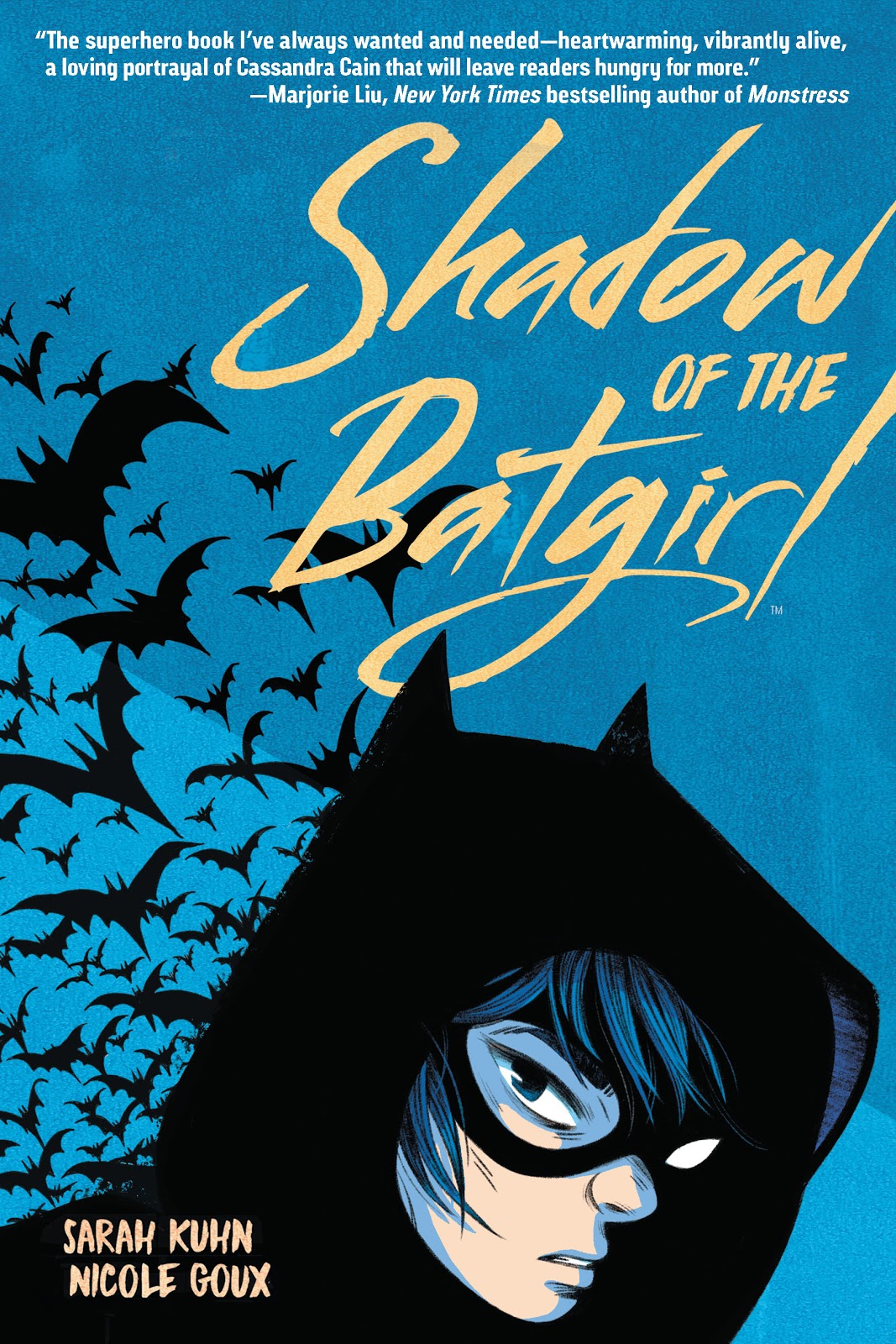
Batman is only as interesting as the people around him. When you write Batman alone, you write a grim broody guy with absolutely no self-awareness and only one emotion. I've read that story a million times.
The Batman that's intrigued me most in recent years is the one found in Scott Snyder's run, beginning in the New 52 reboot in the early 2010s. That Batman frequently interacted with his team: fellow Robins (of which there's almost half a dozen now), Justice League coworkers, and various Bat-themed heroes who operate in Gotham. If Gotham's such a crime-ridden city, it only makes sense to try to make things better as a team and as a family, right?
One of the members of the Bat-family was Cassandra Cain, a mute girl who's taken on the Batgirl moniker. I've never seen her get a series of her own, but here's a YA graphic novel that depicts how she might have come to inherit the cowl.
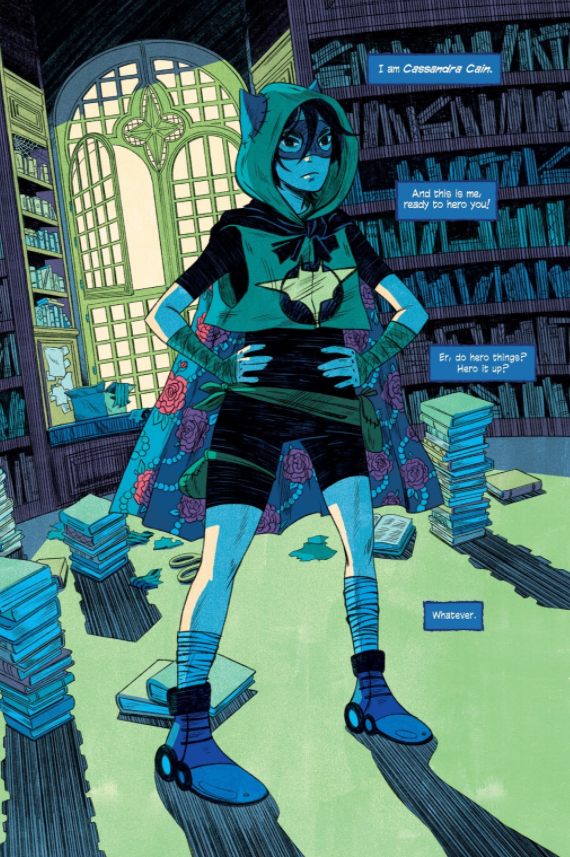
The storyline is simple. Cassandra escapes her abusive father and winds up in a library, where she overhears Barbara Gordon (formely Batgirl, but now in a wheelchair for reasons not brought up in this comic) talking about heroism. With the help of Barbara, and a ramen store owner named Jacqueline, Cassandra figures out how to build herself up, learn who she wants to be, and eventually take on the mantle of Batgirl.
There's not very many details to pick thru in this book; it's pretty much exactly what you'd expect from that premise. But I can't say enough good things about it. The art is gorgeous, flowy and full of character in every panel. Cassandra's struggles as she learns to communicate with other people are depicted with a lot of heart. The action is amazingly good.
I've said a lot of times how I think the superhero genre works well with the teenage coming-of-age story common in YA books. This is a really good example of that. Cassandra coming into her own and crafting a new identity for herself works great for both genres, and is the basis for an absolutely beautiful graphic novel.
The Witch Boy
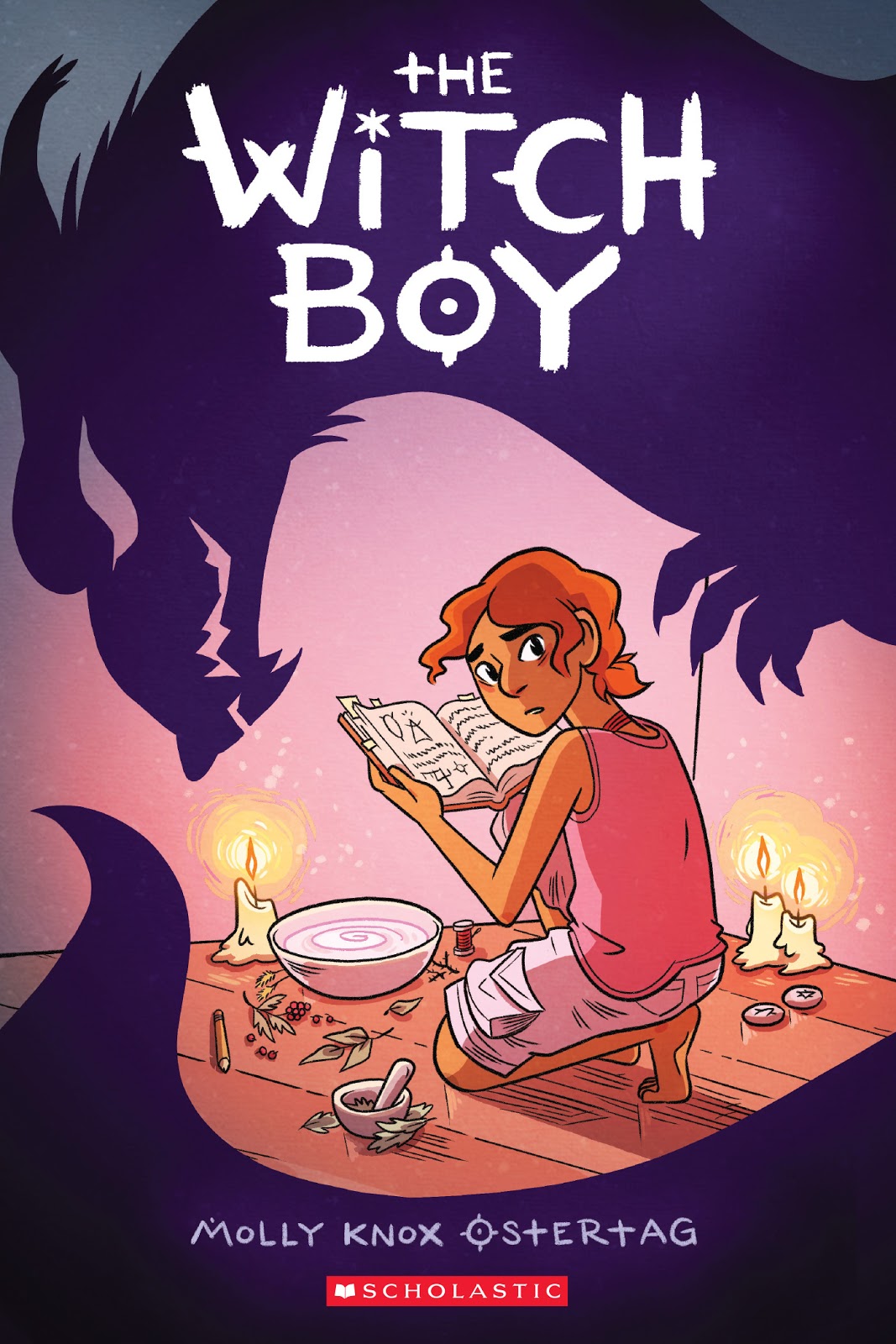
Towards the end of the month, Netflix announced an animated film adaptation of The Witch Boy, a graphic novel from Molly Knox Ostertag. Molly is the wife of Noelle Stevenson, who's known for their critically acclaimed comic Lumberjanes, and more recently for showrunning the Netflix animated show She-Ra & the Princesses of Power, one of my favorite shows of the last few years. So of course, I had to check this out.
The Witch Boy is the most transgender narrative I've ever seen that isn't *explicitly* about being trans. (Well, okay, it ties with The Matrix.) In a small settlement in the woods, children are brought up to learn magic. Boys are brought up to become shapeshifters and learn to fight demons, whereas girls learn witchcraft. Our hero, Aster, doesn't want to learn shapeshifting, and definitely doesn't want to fight. He just wants to learn witchcraft with the other girls. But everybody around him, parents and friends alike, insist that this isn't allowed. They bring up an ancestor of theirs who tried this thing and ended up with terrible evil powers. Aster is forbidden from learning that which calls to him.
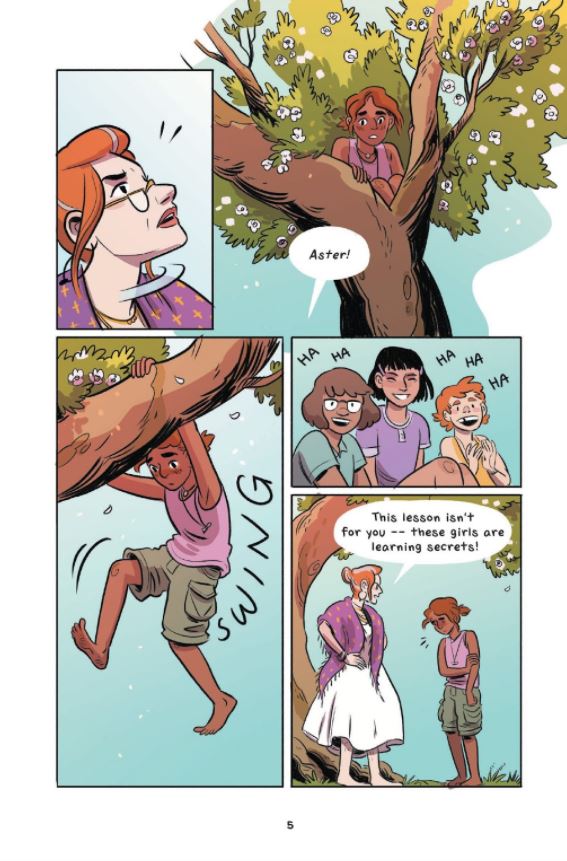
A despondent Aster decides to learn anyway, and his path ends up crossing with a non-magical human, who encourages him. When the boys in the settlement start disappearing, the two friends take it upon themselves to figure out what's going on, mostly by using witchcraft. And that's pretty much the bulk of the story. It's meant for young readers, so in some ways, the ending will be pretty predictable to most readers. And yet in other ways, it surprised me.
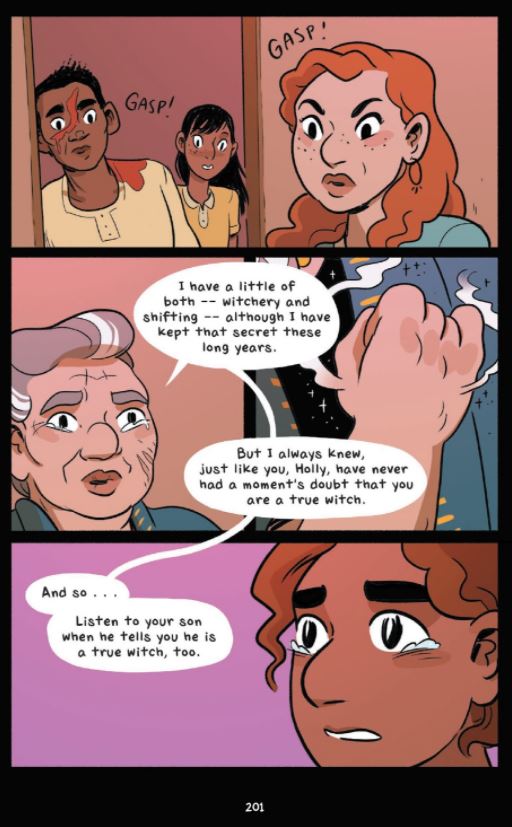
This is a powerful narrative to give to children. Aster is never explicitly called transgender, but he is clearly gender-nonconforming. Aster doesn't have a traditionally masculine or feminine name; "Aster" is a genus of flower, the sort of gender-ambiguous noun that I've seen in many of my nonbinary friends. His visual appearance also leans feminine: long ponytail, light purple clothing. Most importantly, over and over in the narrative it's reinforced that Aster feels more comfortable in the girls' group. I wish the story had gone just one step farther and actually used trans-positive language, but it's still a deeply powerful story about being who you are, even when everyone around you tells you no. I'm glad Molly wrote it, and I'm excited about it getting a potentially even wider audience with its Netflix adaptation. This was a treat.
TELEVISION
Love, Chunibyo & Other Delusions

I've never heard of "chunibyo," but apparently this is a thing in Japan. "Chunibyo" is a term that loosely means "middle school disease," and it was coined as a term for kids in middle school who let their imaginations get away with them, believing they have magical powers or are from other worlds.
"Love, Chunibyo & Other Delusions" is a 2011 show by Kyoto Animation, a studio critically acclaimed for classics like "The Melancholy of Haruhi Suzumiya" and more recent series such as "Miss Kobayashi's Dragon Maid." It follows a group of characters afflicted by chunibyo as they enter high school. It's sort of meant as a deconstruction of the concept, but it accidentally introduced the term to more people outside of Japan, including myself. I found the show deeply endearing.
One of the two leads, Yuta Togashi, is embarrassed of his middle school mage persona "Dark Flame Master," and just wants to forget about it. He quickly comes into conflict with Rikka Takanashi, a high school freshman who still believes she has magical powers, including a "Wicked Eye." Yuta is embarrassed by Rikka, but the two end up spending a lot of time together, slowly warming to each other, and bringing each further into the other's world. If that's not a great setup for a teen romance story, I don't know what is.
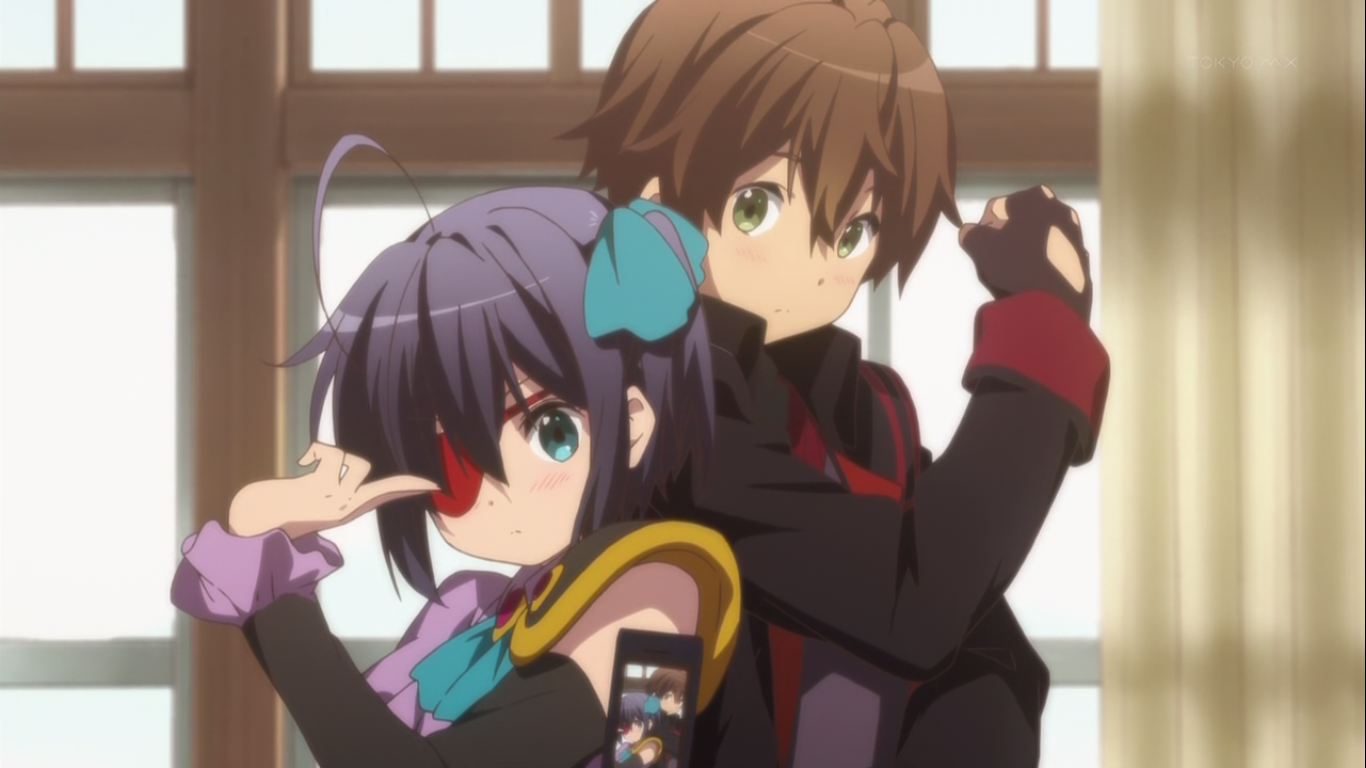
The thing that really makes this show work is that it's kind to its characters. Even though our POV character Yuta is embarrassed about his past chunibyo life, the show really isn't embarrassed about the concept at all. When Rikka and other characters go to great lengths to play pretend, we do get some cutaways showing what's actually going on, but we also get some lovely and frequently over-the-top animation showing the world they're seeing.
And what Yuta learns over time is that there's a really good reason Rikka's still a chuuni. The more time Yuta spends with Rikka and her sister, the more he learns that Rikka went thru some deeply traumatizing experiences, and chunibyo helped her cope and try to move on. When Yuta and Rikka ultimately fall in love, he still gets embarrassed about her over-the-top displays sometimes, but he takes part in her delusions almost as frequently. Rikka's imagination is treated as a beautiful and important part of her.
So yeah, this show is silly. But it's also sweet, it has a wonderful cast and a light tone, and it's a great story about the power of imagination. I haven't quite finished it - along with two full seasons, there's two films and a couple dozen shorts. But what I've seen so far is a really good argument for becoming one of my new favorite shows of all time.
WandaVision
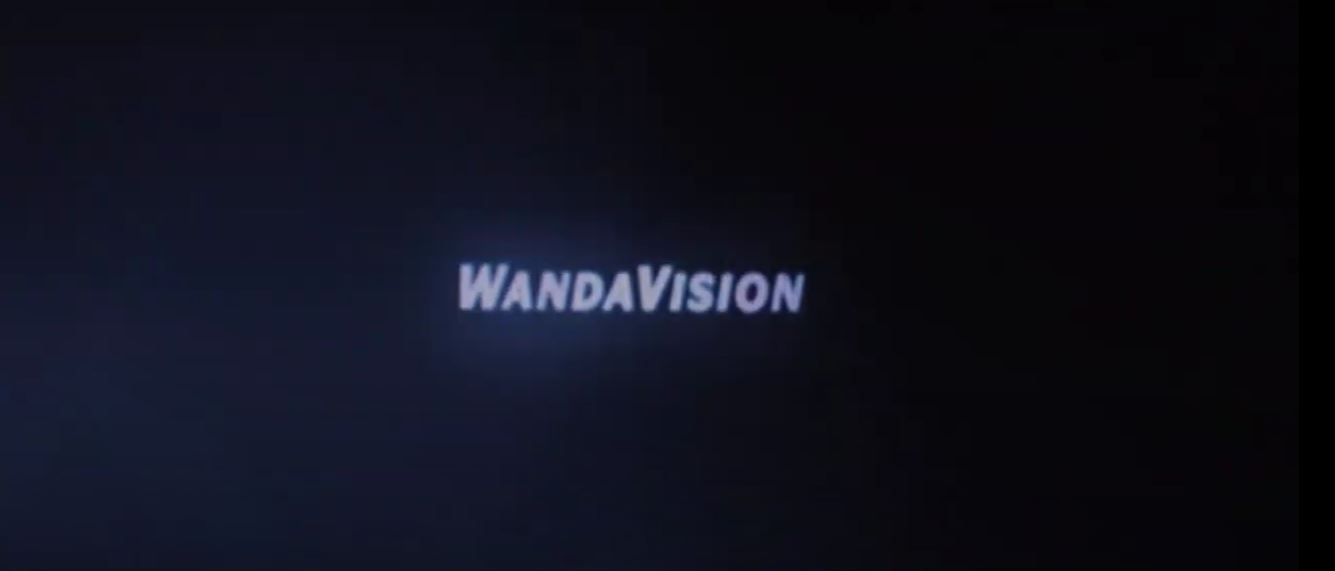
The Marvel Cinematic Universe is BACK, except this time it's not in cinemas! Maybe they should change that name for Phase 4, which has more television projects than film projects currently planned.
For the first time since Spider-Man: Far From Home, almost two years ago, we get new stories in the universe of the Avengers films that have been running in theaters since 2008. Other projects had planned release dates before WandaVision, including the Black Widow movie and the Falcon & Winter Soldier series, but I think this was a perfect start to the new MCU era for a lot of reasons. It's been a great way to start my Friday mornings.
In the four episodes that have aired to date (nearly half the series), the witch Wanda Maximoff and android Vision find themselves in the world of a sitcom from the mid 20th century. Each episode echoes a new decade: so far we've seen takes on I Love Lucy (the 50s), Bewitched (the 60s), and The Brady Bunch (the 70s). Wanda and Vision don't seem to realize that they're actually Avengers from the 21st century; they play their parts as the two leads of this constantly-evolving sitcom.
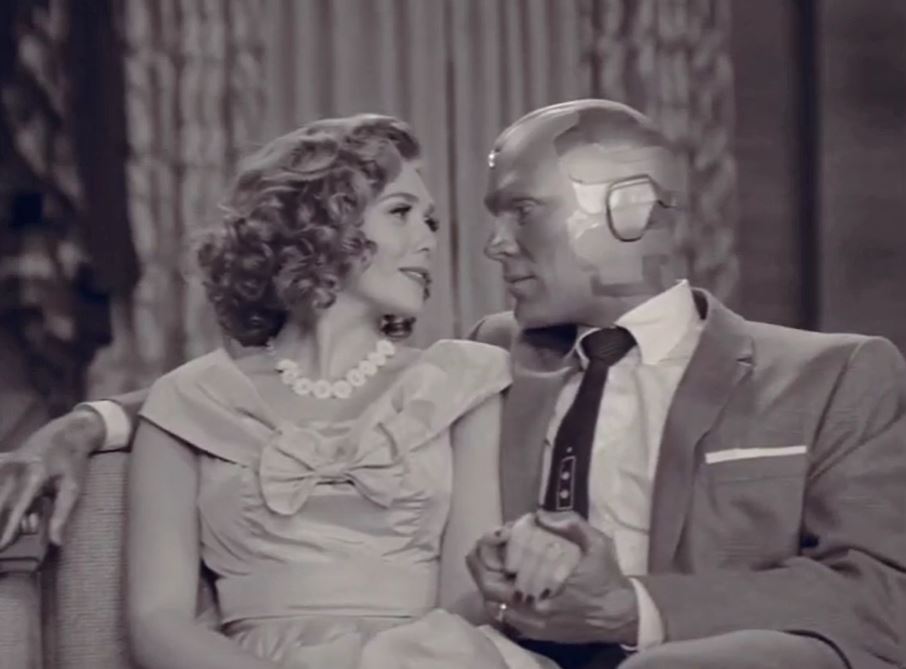
Except, they sort of do realize they're out of place. There's a lot of recurring plot elements, within the sitcom, about Wanda and Vision trying to fit in. Both characters retain their identities as a witch and a robot, two nonhuman people trying to fit in in a very mundane world. In the first episode, Vision tries to convince his boss that he's worth keeping around via a fancy home-cooked dinner; in the second episode, Wanda and Vision try to put on a magic show without revealing that they have actual magic powers. On its own terms, it's legitimately clever stuff.
And then the cracks start to show. Of course, the audience knows that something's very wrong, so it's a matter of time before Wanda and Vision, and even the people around them, start to realize that this sitcom world isn't real, or at least is hiding some sort of secret. How those cracks reveal themselves is part of the fun of the show, and there's a LOT to theorize about, whether you're a fan of the comics or not. I've got some pretty good guesses as to where this is all leading, but there's still a fair few elements that haven't fallen into place yet.
The whole thing is a LOT of fun - as a throwback sitcom, as a mystery, as the latest element of the Marvel Cinematic/(Televisual?) Universe. We've got as many as ten projects in the MCU planned for this year, and I couldn't be more excited.
MOVIES
Tenet
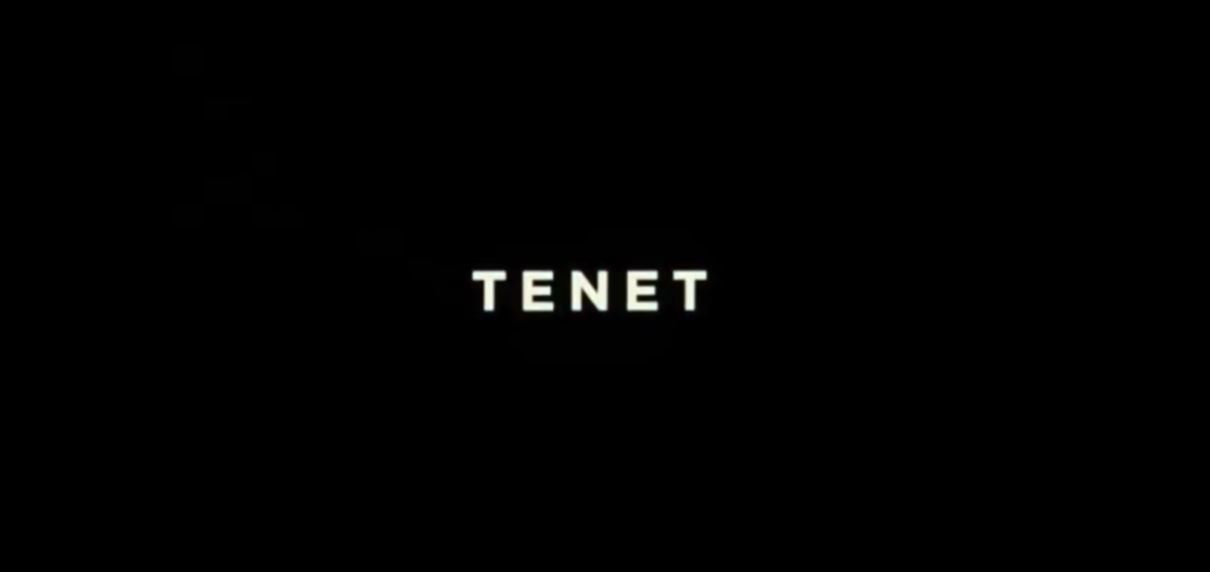
I can't help but feel that this movie would have been received better if everybody had been able to see it at once. Tenet was originally scheduled for a summer 2020 release. At Nolan's insistence, it was finally released in theaters towards the end of August, received a DVD and digital purchase release around Christmas, and only now - at the beginning of January - did it FINALLY receive a non-cost prohibitive rental release date. So only now are most people actually finally seeing it.
Here's the thing about Tenet: for me, this film works best in Youtube clip form. That isn't the insult that it may seem to be. I mentioned in my best of the year list for 2020 that Youtube clips of The Good Place finally convinced me to go back and finish that show. Tenet is the sort of film that BEGS to be analyzed and picked apart, so that people can actually understand what's going on. I have now seen countless Youtube clips explaining the events of the film in every possible way, and it took all of that analysis for me to basically understand the plot.
At the VERY least, with how bad the sound mixing is, you need captions to understand the film. And it certainly helps not to be sitting in a theater, anxious for two and a half hours about the possibility of catching a deadly disease.

Let's strip away the pretension inherent in a Christopher Nolan movie to talk about this film for a second, in as basic terms as possible. Tenet is a time travel movie. Nolan's been trying to talk around this genre designation in just about all the marketing I've seen. It's presented as a movie about "time inversion." Nah, bullshit. This movie only starts making a lick of sense when you start understanding it as a time travel movie.
Imagine for a second that Marty McFly got into the Delorean in Back to the Future and activated its time travel device. But instead of sending him to a specific point in the timeline, Marty and the Delorean started moving backwards in time, at the same rate that they were previously moving forwards in time. That's what time inversion is. It's time travel, at a rate of one second per second, in the opposite direction you were previously going. It does let you get to other points on your timeline, just very slowly. That's all it is.
I watched this movie with my roommates, and the first night we only got thru half of it before we couldn't watch any more, because of how boring it was. The next night, we picked it up at the halfway point, a climactic car chase. And what do you know, the halfway point is where the film gets GOOD, especially since by that point, I'd spent a lot of time on Youtube learning about the mechanics of the time inversion. It really did help to have at least one person in the room actually understanding what was going on.
The premise is, our hero, pretentiously named "The Protagonist," is brought into a secret society to investigate the origins of a number of objects (mostly weapons) that have been "inverted" in time. These objects don't move thru time the way most people do, but originated from the future and are now moving backwards in time. The secret society believes that these objects are from a war in the future.
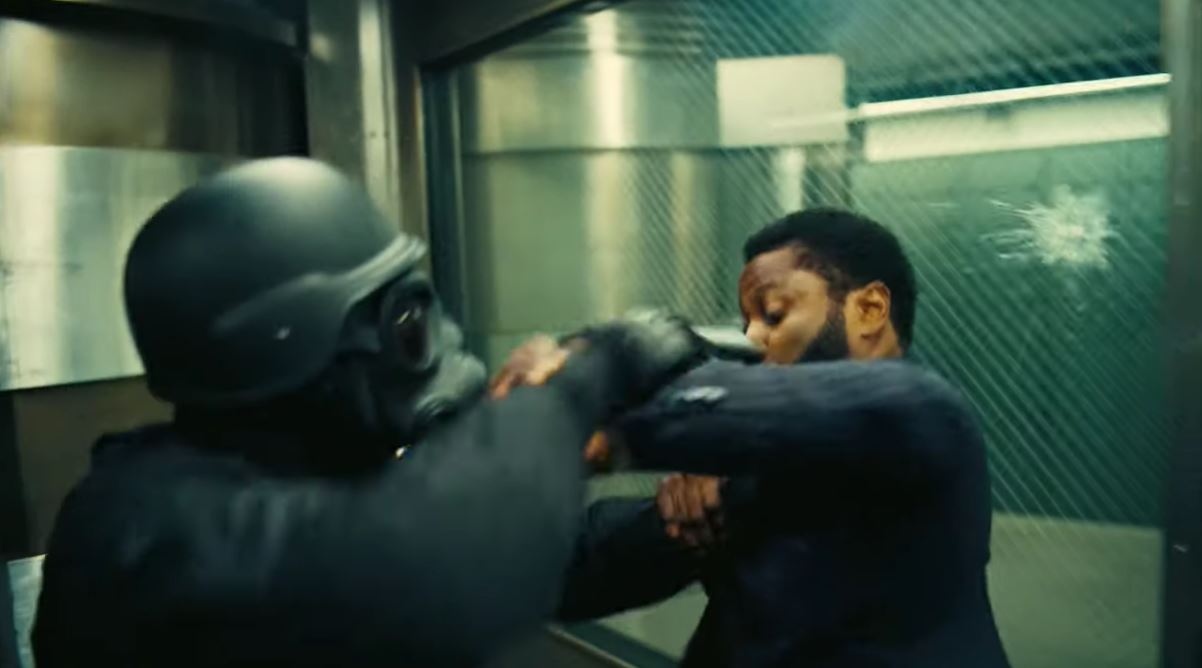
Okay, so, now ignore all that. The plot is bad. And also, it doesn't matter. It's an excuse, even within the story, to get the characters to the places they need to be for some cool stuff to happen. There's a car chase, a fistfight, a large-scale battle. It WOULD be your basic action movie stuff, but Nolan uses every opportunity to film things in reverse, which creates a lot of visual interest and excitement - even the things you've seen before, you're never quite sure how they're gonna go. I mean that in multiple senses.
Look: this movie isn't great. It's not close to Nolan's best work. But I've gotten less enjoyment out of Nolan movies before. I thought Dunkirk was sort of boring, and Interstellar kind of lost me. As a puzzle to unwind, Tenet is fun, and I'll be honest: there aren't a lot of blockbusters out there that present themselves as puzzles to unwind. The final action sequence of the movie has editing that reminds me strongly of my favorite webcomic, Homestuck, which is known for its experimental storytelling and non-chronological shenanigans. I'm not saying I got a lot out of this movie... but I honestly did get a fair bit of fun out of it.
Promare
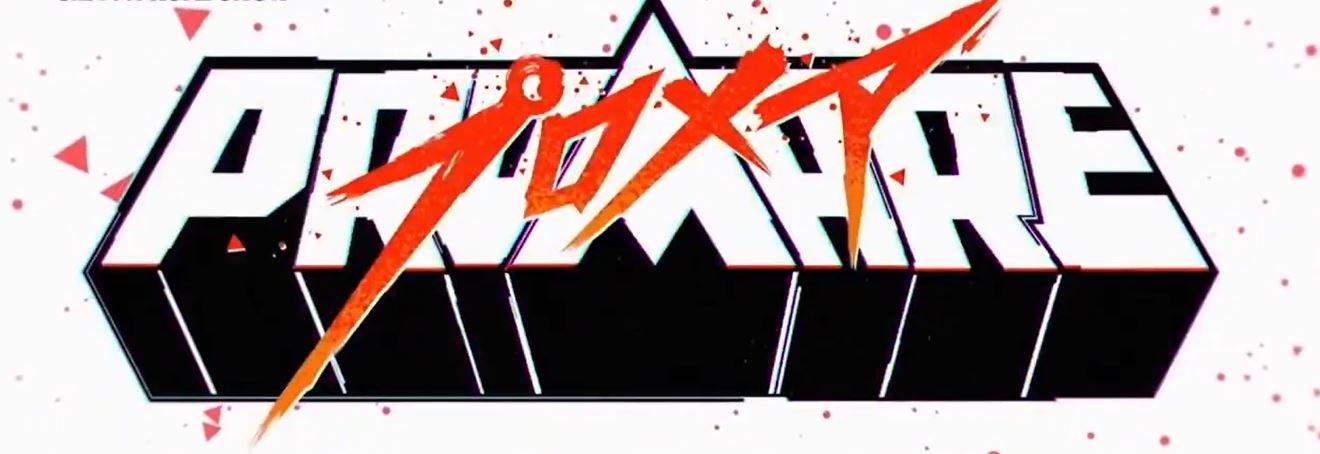
Studio Trigger made a movie! Well, okay, they've made movies before actually. My favorite show of theirs, Little Witch Academia, originally existed as two medium-length animated films, before it was greenlit for a full series. So okay, I'll be a bit more specific: Promare is Trigger's first feature-length film, that is intended to be told merely as a feature-length film. There, I think that works better.
In an alternate future, some humans (called Burnish) have developed a mutation that causes them to spontaneously combust. Our heroes are a group of firefighters with weapons-grade tech (sort of like cops in our world) which allow them to put out the fires started by these people. When our hero Galo comes into contact with a rogue group of Burnish and their leader Lio, he learns that things aren't what they seem, and the world is actually on the brink of apocalypse.

Despite the simple premise, Promare is the most visually abstract work I've seen from Trigger yet. They've always tended towards this style, but the Gurren Lagann-meets-Kill la Kill aesthetic of the film really pushes this pretty far. There's extended shots that are nothing but pulsing abstract geometrical shapes, but thru context you still understand what's going on.
It's also, of course, a standard over-the-top Trigger anime. Trigger has stayed away from its mech anime origins for most of its 8-year existence, but in the last couple years it's gone all in. Promare, Darling in the Franxx, and SSSS.Gridman are all mech anime.
I have to admit that I might be just a little bit too gay for this show. Oh, it's very gay; its two male leads are very clearly in love with each other, and they even kiss. But I think I related better to some of the more female-driven shows that Trigger's made, especially Little Witch Academia and Brand New Animal. I can't really fault the movie itself, it's damn good, but I know it's resonated more with other audiences.
GAMES
If Found
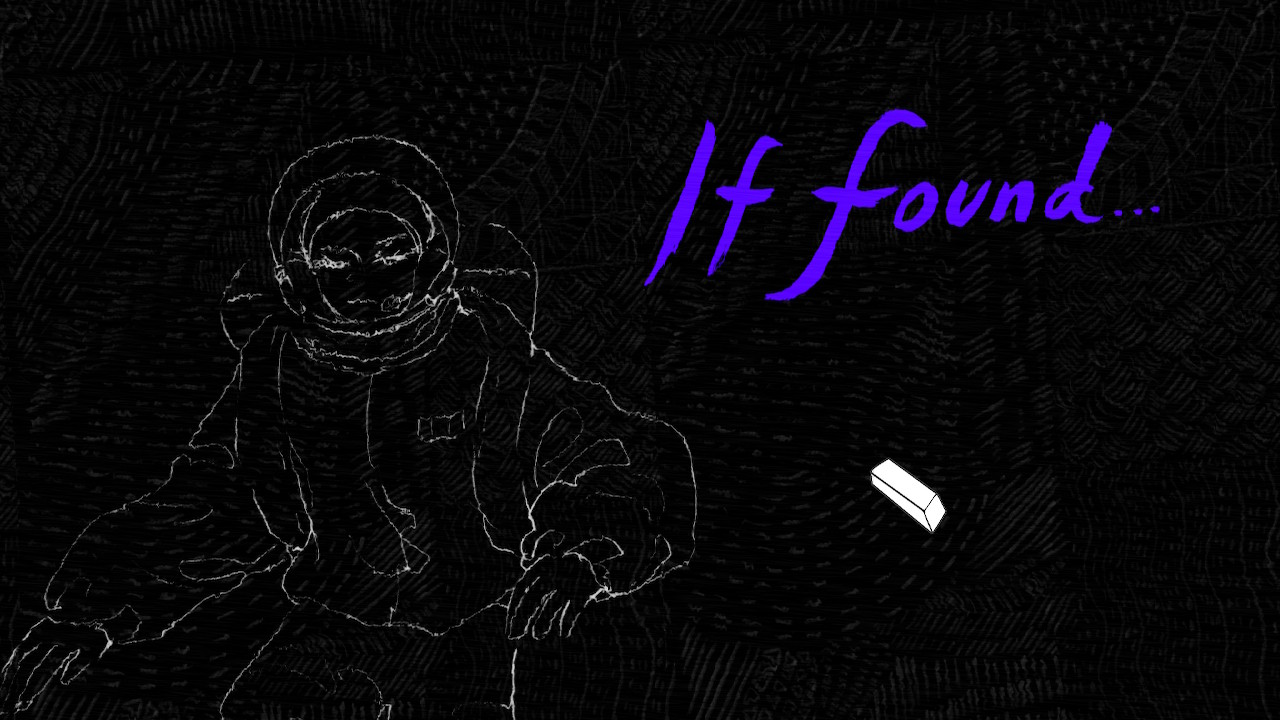
I'm legitimately astounded that this game exists. If Found is one of the newest games published by Annapurna Interactive, one of my favorite game publishers. Every game of theirs that I've played has been interesting, and nearly every one has become one of my new favorite games. I have high expectations for Annapurna... but this game still blew me away.
Released early in 2020, If Found is... sort of a visual novel? You play as... well, it's unclear. But you're reading the diary of Kasio, a young transgender woman living in Ireland in 1993. And you're also reading the story (somehow) of an astronaut in space, investigating a black hole.
But you don't advance the story by clicking thru it, or even by turning pages. You advance the story by erasing it. So, haunting you in the background of the entire story is: why? Why is this the main gameplay mechanic? It is a fascinating mechanic, and they keep finding new twists on it that makes the 2-3 hour length interesting, but... surely there's a reason for it.
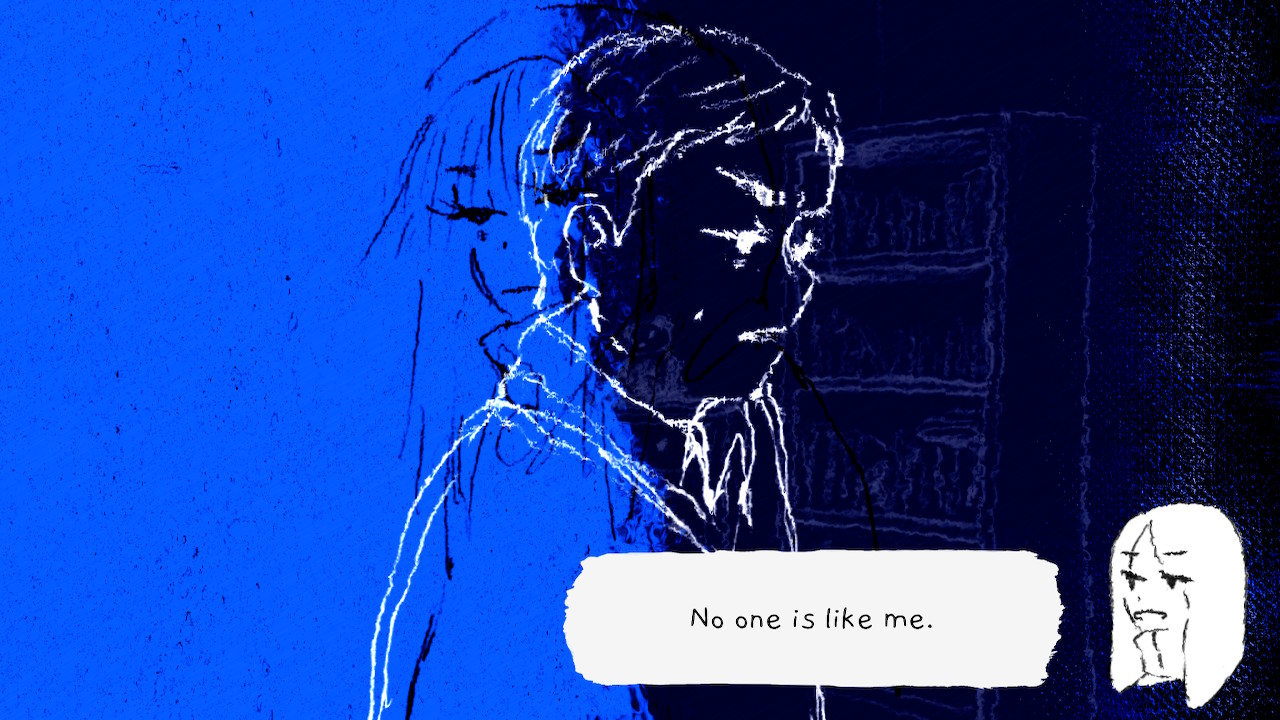
It probably has something to do with Kasio's story. Kasio is a trans woman who is rejected by her parents and runs away. She moves into an abandoned house with a young queer band. As she wrestles with her own identity, she's also forced to grapple with how it affects her relationship to her family, her friends, and her larger community.
I don't know how much of this story is autobiographical. I presume a nonzero amount. It's too accurate to experiences I'm intimately familiar with to be otherwise. Many, many trans people I know have gone thru the sort of familial and community strife and rejection depicted in this game just by coming out. It's also not uncommon for newly out trans people to find a new queer family, which also happens in this game. These are fairly universal experiences for trans people.
For this story, which is deeply heartfelt in its specifics but also very universal as a trans experience, to be published by a MAJOR independent developer like Annapurna, is honestly so astoundingly wonderful that I don't know how to react. I just want to tell everybody: please play this. It is not very long, and it is wonderful. Playing this with my roommate at 5 in the morning was a deeply emotional experience, and I'll treasure it for a long time.
Outer Wilds
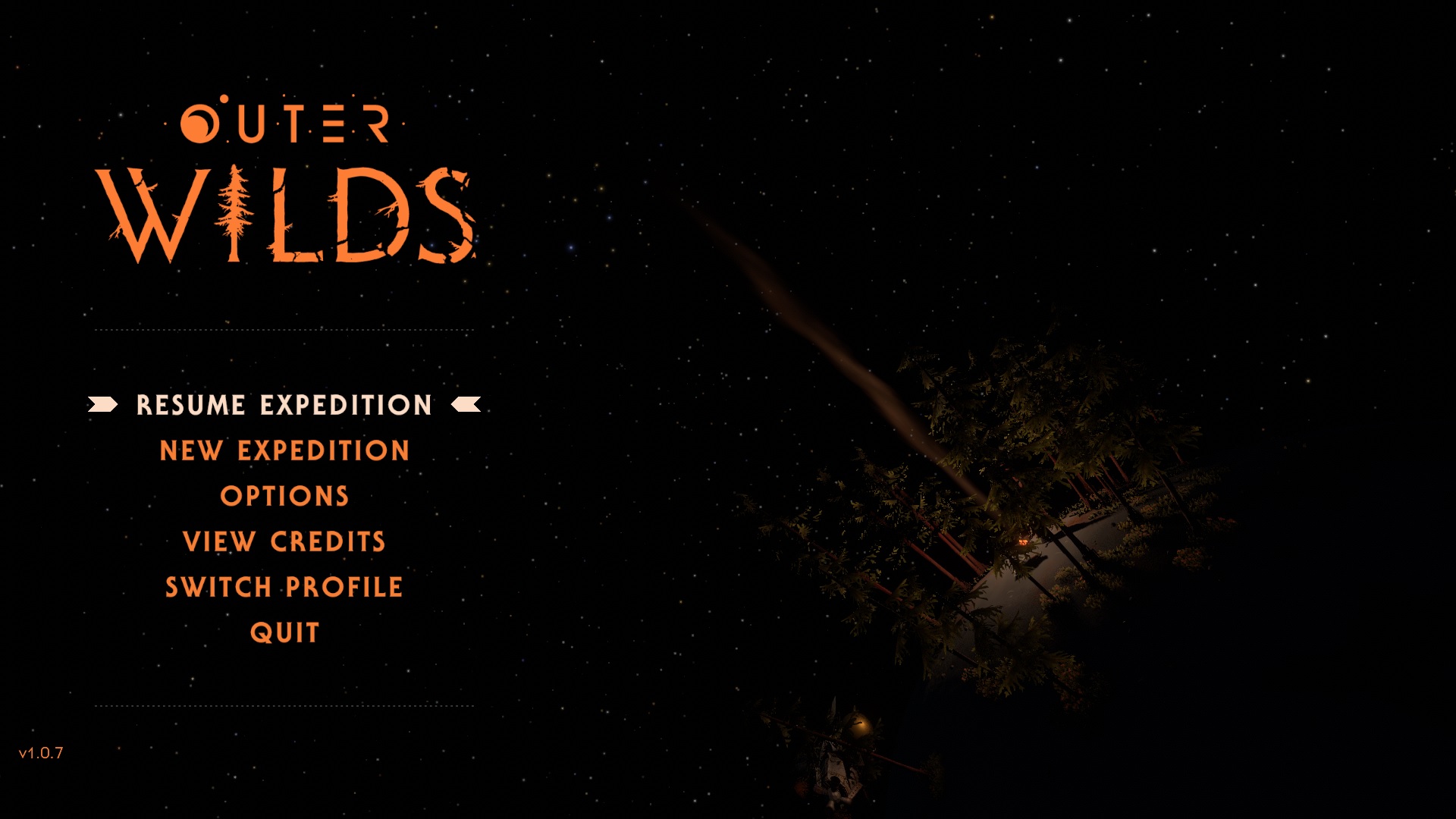
This is another Annapurna Interactive game, and... look, okay, I'm kind of an Annapurna fangirl. One of their games, Sayonara Wild Hearts, was my game of the year last year. Gorogoa and What Remains of Edith Finch are both among the best gaming experiences I've ever had. If Found, as I wrote above, was... absurdly wonderful.
Outer Wilds, what I've played of it so far, is by contrast *merely* an astonishing yet somewhat overwhelming open-world space exploration mystery game. The bar for Annapurna games is so high that "this is a phenomenal game, and yet it's a little hard for me to get into" is a step DOWN.
You play as a (nonhuman) space explorer who lives on a small planet in a small solar system. You take off in your spaceship and start exploring the other planets to see what else you can find. Twenty minutes later, the sun explodes, time rewinds, and you're back on your home planet, with a twenty minute timer until it all happens again.
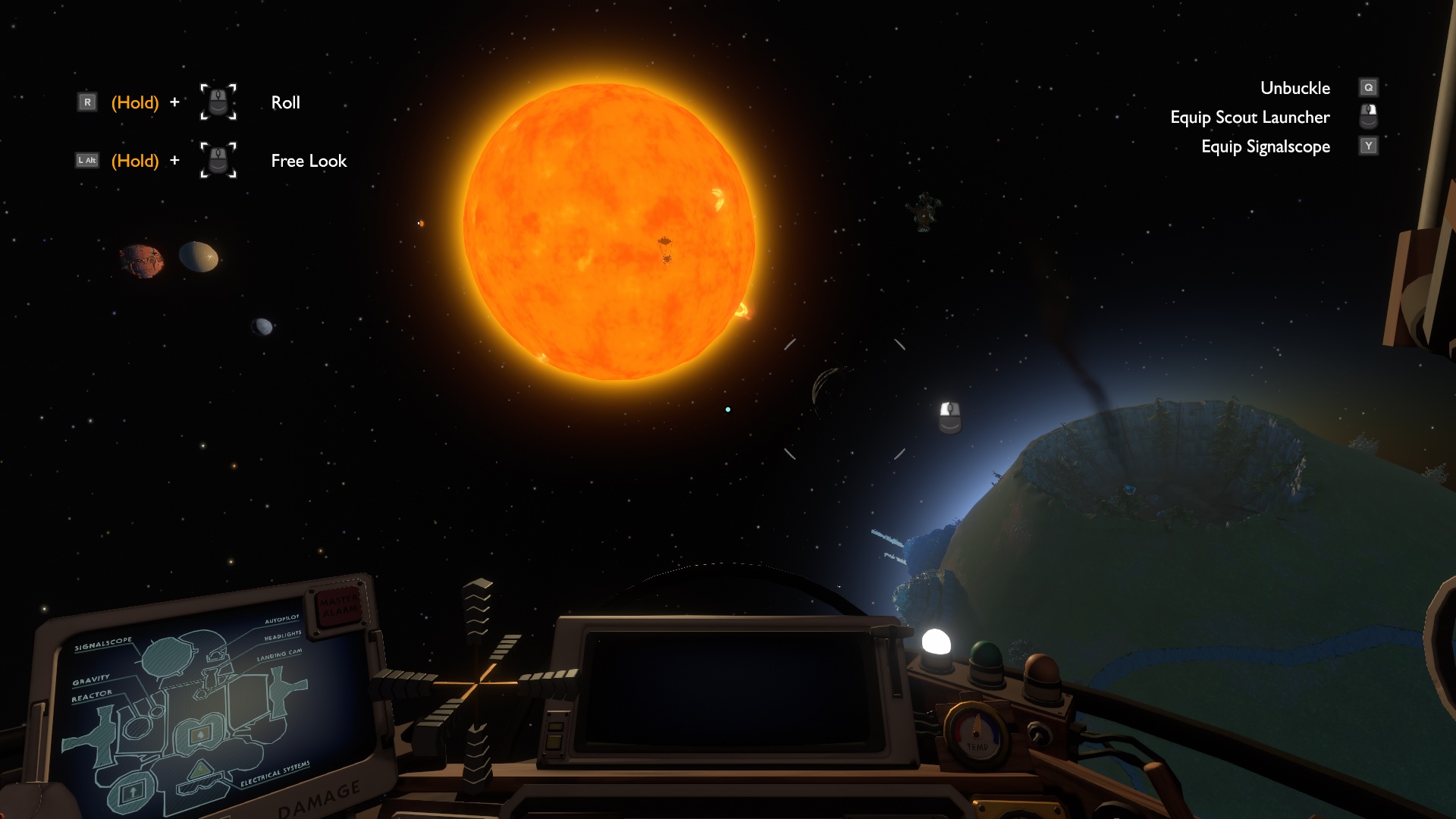
Early in Outer Wilds, you're required to explore a small museum before you're allowed to blast off into space. I think that's the moment when I realized that this game is an archaeology simulator. It's a mystery game where the way you figure out what's going on is you explore other planets to figure out what happened to the other residents of the solar system, past and present.
It's not just the time limit that makes this game overwhelming to me. Nearly every location in this game is hazardous in some way. On one planet, an underground labyrinth slowly fills with sand until you're crushed against the ceiling. On another, take a wrong step and you'll fall into a black hole that teleports you into the middle of nowhere. This game is *hard*.
And there's not a ton of direction it gives you at the outset. Y'know how The Legend of Zelda: Breath of the Wild at least gives you "go to these four locations and activate the Divine Beasts" objective, to guide you thru its huge open world? Outer Wilds sort of does that, but... not really. You get a few objectives to go for at the beginning, but the people you find at those objectives just give you some more cryptic clues. It really is up to you to divine the general shape of the game, bounce between exploring various locations, and eventually... well, do something to end the game. It's unclear.
I haven't finished this game. I don't know *if* I will, to be completely honest. Of the Annapurna games I've played, it's my least favorite. But that's a very relative term. I love the tone, somewhere between chill as heck and dangerous as hell. I love the art style, which seems simple at first but is in fact very carefully designed. I love puttering around the map in my little spaceship, at least until I take a wrong turn and accidentally fall into the sun. This game is... it's a trip, y'all, but I do recommend at least trying it. Who knows, maybe you'll find a little fun here.
Hitman 3
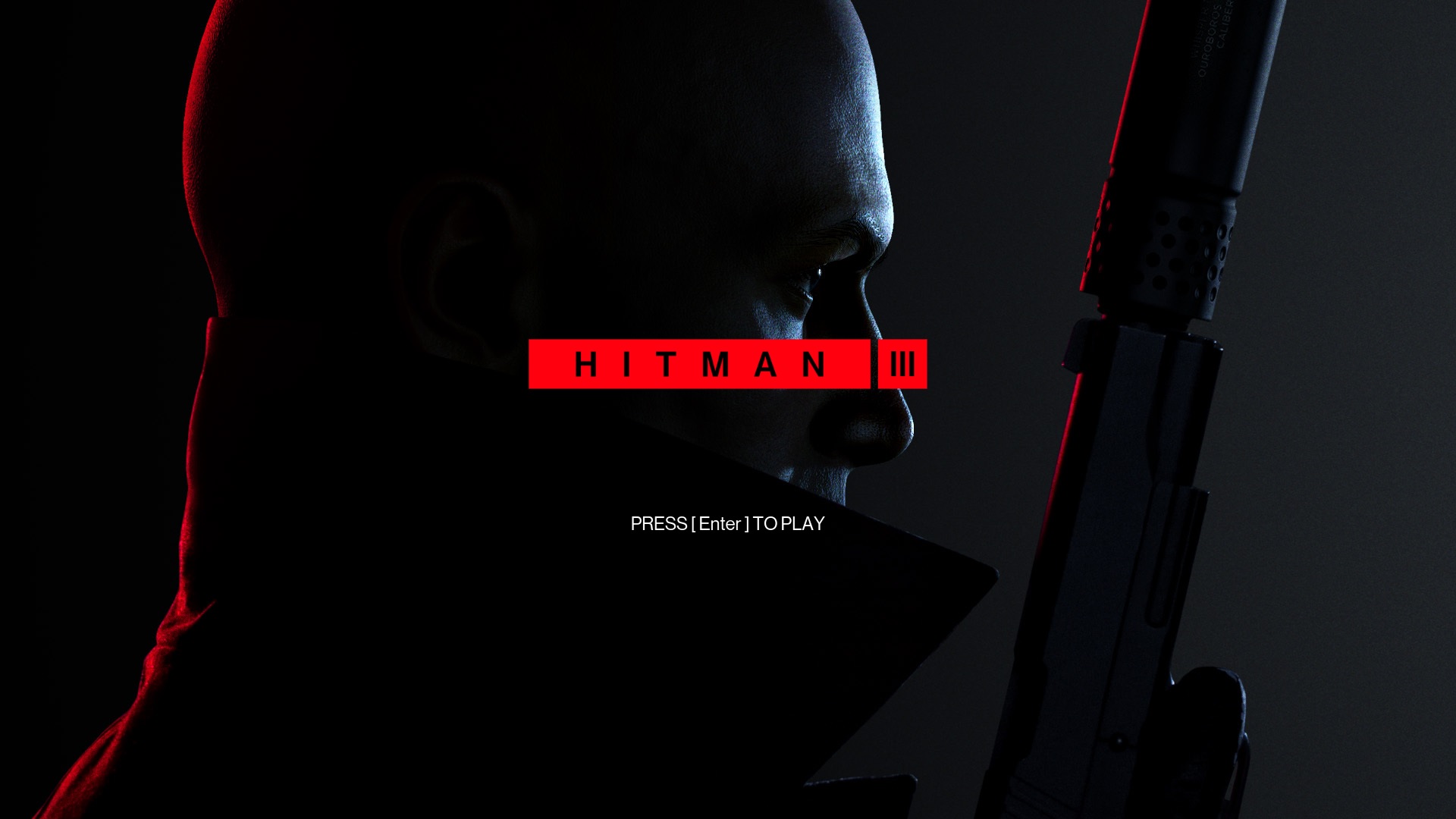
Here it is. The finale to IO Interactive's five-year-long "World of Assassination" trilogy. I've put dozens of hours into this series, but until now, I'd actually only played the first few levels of Hitman 1. I like to 100% things, see, and I love getting to know every nook and cranny of a space. That's why I spend so much time with Batman: Arkham Asylum whenever I play it. So I've been spending a good deal of time ferreting out every challenge and everything hidden in the first few levels of Hitman 1.
When Hitman 3 released, I decided it was time to start playing thru all of the levels, and try each one at least once before returning to my more methodical play style. I've been very very excited about the new levels (including an old mansion murder mystery) and the resolution to the story.
The thing is, I'm so behind, that this month all I've been able to play so far is the levels of Hitman 1 and 2. That's the Paris mansion, an Italian villa, a Morrocan embassy, a hotel in Bangkok, a farm in Colorado, a high-tech hospital in Japan, a small house on the coast of New Zealand, a racetrack in Miami, a drug cartel in Colombia, the streets of Mumbai, a suburban block in the US, and a secret society's castle island headquarters.
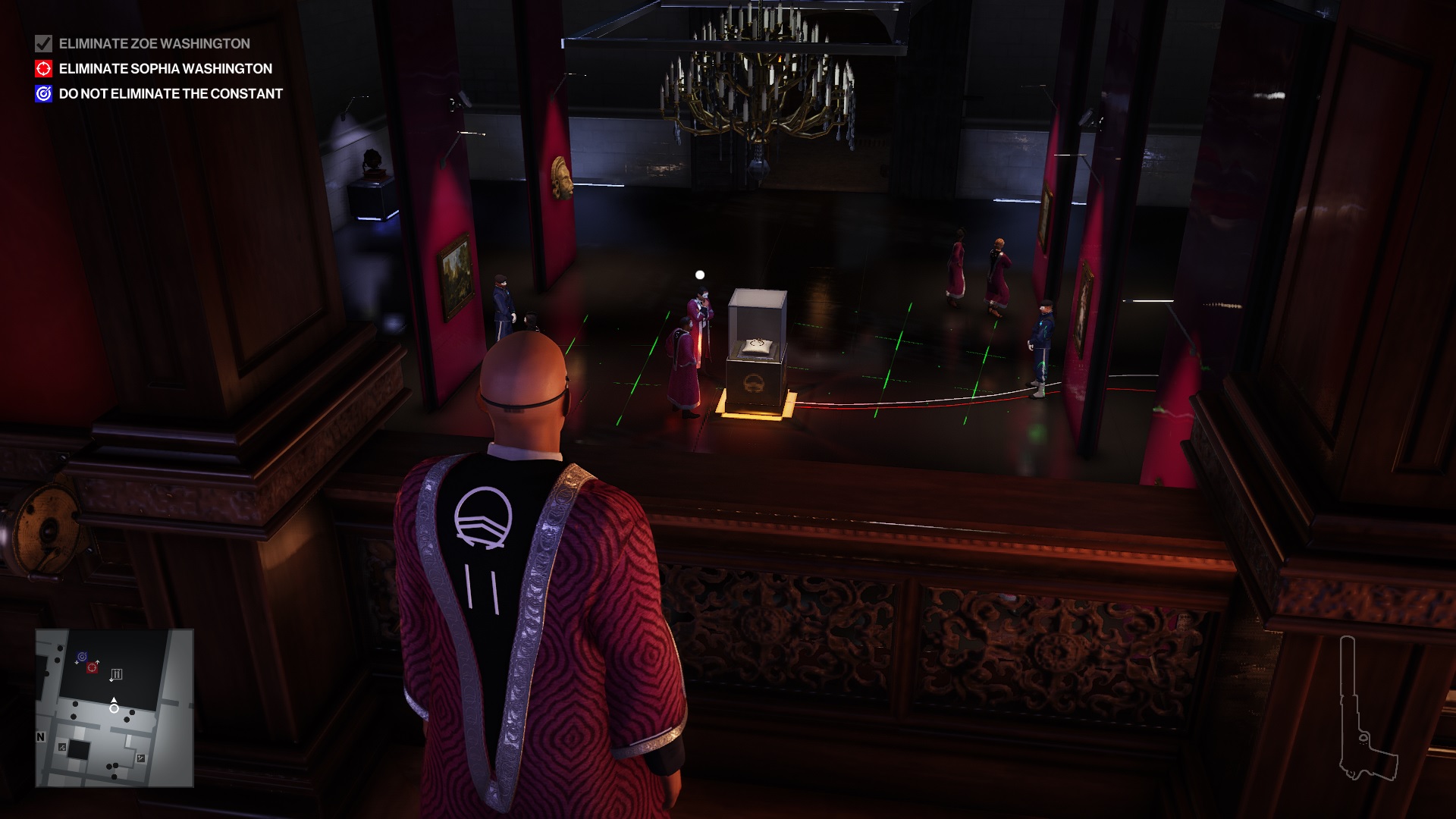
The levels in Hitman encourage you to play them thru multiple times; there's just too much to see in a single playthru for you to find it all your first time. But what I learned with this is, playing thru each level of these games once gives you an honestly pretty meaty experience. The final level of Hitman 2 (not counting the DLC) took me two and a half hours to complete. These levels take *time* to play.
But it's worth it. You honestly get a pretty good experience playing thru it like this; if nothing else, you get to see all the cutscenes between levels in a short period of time, which makes the story a bit easier to follow. It's also a pretty solid difficulty curve. The two US levels in Hitman 2 are pretty easy, and the other levels are all pretty hard, with the final level being the most difficult one.
I'm excited as heck to play thru these levels again, and start uncovering all their secrets. But before that, in February, I'll be playing the levels that are new to Hitman 3 (plus the Hitman 2 DLC). That's a New York bank vault, an island resort, a Dubai skyscraper, an old English mansion, the streets of Berlin and the streets of China, and... I'm not sure what else. IO Interactive has been very careful about not spoiling the last couple levels of the series.
But I'm very excited. Very few other games that I've played have this much love put into every single level. There's a huge amount of care and work that's been put into the design of these games, and I'm so glad that IO was actually able to finish the trilogy. Next month, it'll be time for me to finish it, too.